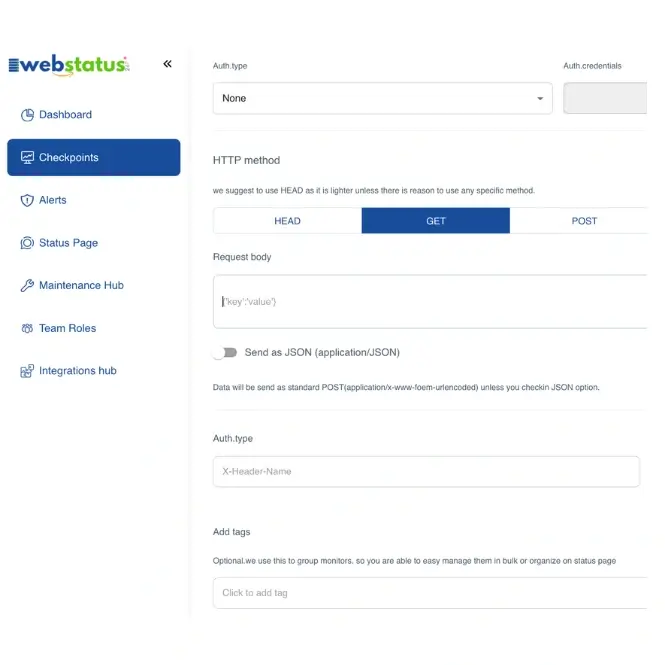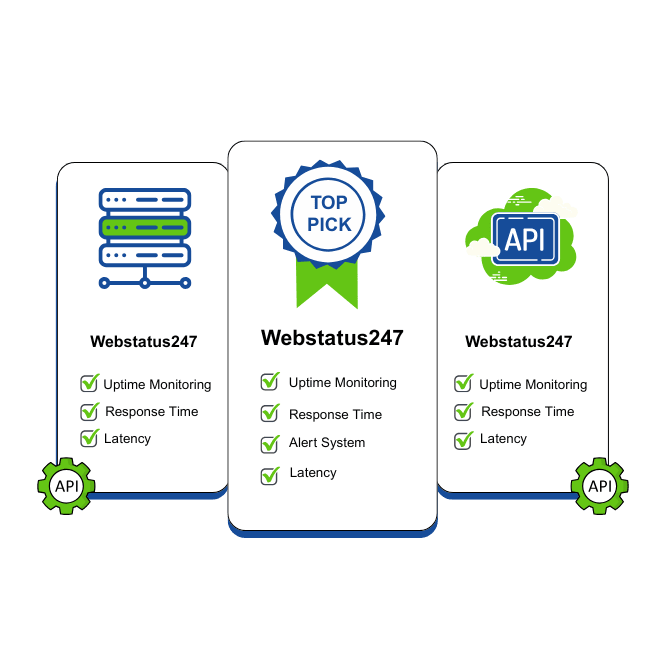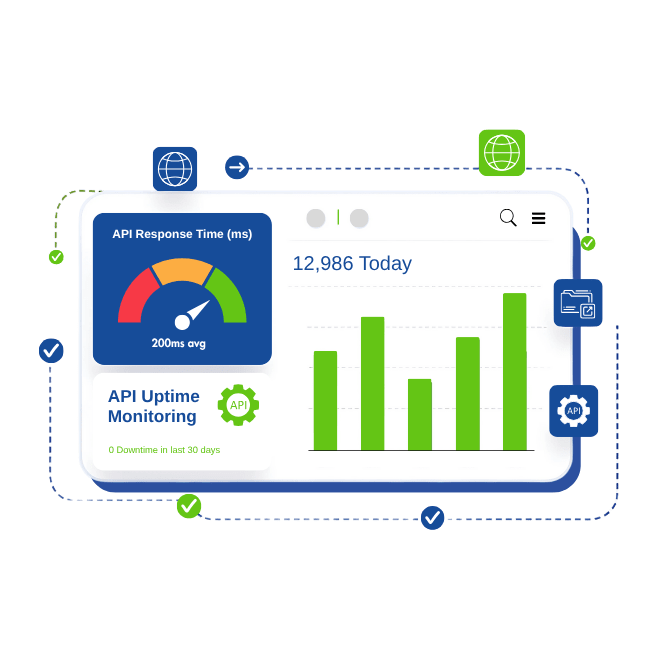API Monitoring
Ensure Optimal Performance and Uptime
API monitoring lets you track availability, speed, and reliability in real time. Stay ahead of issues, optimize performance, and build trust with users through comprehensive monitoring.
Sign Up Now
.webp)
API Uptime Monitoring
Never Miss a Downtime
We continuously check your APIs from multiple global locations. Instant alerts notify you of downtime so you can fix issues before they affect users.
API Monitoring Tools Free
Start Monitoring Today
Our free plan includes essential features like uptime checks and basic performance metrics—an easy way to start tracking your API’s health.


API Performance Monitoring
Deliver Lightning-Fast APIs
Track response times, latency, and error rates to keep your APIs efficient. Use detailed insights to pinpoint bottlenecks and improve reliability.
Best API Monitoring Tools
Top Picks for Your Business
Powerful features, global monitoring, customizable dashboards, and pricing that scales. A clean interface makes it simple for any team.

Why API
Monitoring Matters
APIs power modern experiences by connecting systems. Reliable, fast APIs are essential for a seamless user journey.

Real-Time Visibility
Track response times and error rates as they happen.

Proactive Issue Resolution
Get immediate alerts and address problems early.

Performance Analytics
Analyze usage patterns and pinpoint bottlenecks.

Global Testing Locations
Test from multiple regions for consistent performance.

API Traffic Monitoring
Gain Insights into Usage
Track request volume, patterns, and peak times to plan scalability, catch anomalies, and handle demand effectively.
API Monitoring Dashboard
Your Command Center
A customizable real-time view of performance and availability worldwide. Share public dashboards, spot trends, and generate SLA reports on uptime and speed.


Alerts Where You Need Them
Stay Ahead of Issues
Be the first to know when something goes wrong. Get instant notifications via Email, SMS, Slack/Discord, or your preferred channel so you can act quickly.
Challenges of API Monitoring
Tackle Complexities with Ease
Dealing with distributed systems, global availability, and subtle performance drops is tough. Automated checks, global checkpoints, and actionable insights make it manageable.

How WebStatus247 Works in API Monitoring
We continuously test your APIs from multiple locations, provide detailed metrics, and alert you instantly if problems arise—all in a simple, intuitive interface.

Monitoring Locations
Global Reach, Local Insights
Test from diverse global checkpoints to get an accurate picture of performance across regions and deliver consistent experiences worldwide.
Public Cloud
Scalable Monitoring Solutions
Leverage a global network to track your APIs from multiple locations, ensuring reliable performance data and high availability.

Private Agents
Secure Internal Monitoring
Monitor from within your firewall for enhanced security and visibility into internal API performance using private agents.
Affordable Feature-Packed Solutions
Powerful tools at budget-friendly prices: from uptime checks to advanced analytics, keep your APIs and websites performing their best.
Status Page Transparent Performance Updates
Our status page gives clear, real-time insights into performance, task execution, and incidents. Stay informed about uptime, response times, and service availability.

Frequently Asked Questions
 What are the 4 types of API?
What are the 4 types of API? Why do I need API monitoring?
Why do I need API monitoring? How often should APIs be monitored?
How often should APIs be monitored? What are key API monitoring metrics?
What are key API monitoring metrics? Can I monitor APIs globally?
Can I monitor APIs globally? Are free API monitoring tools effective?
Are free API monitoring tools effective? Can I monitor internal APIs securely?
Can I monitor internal APIs securely?
What are the 4 types of API?
Open APIs (public), Partner APIs (shared with select partners), Internal APIs (for internal use), and Composite APIs (combine multiple APIs).
Why do I need API monitoring?
It ensures reliability and performance, preventing downtime and improving user satisfaction.
How often should APIs be monitored?
Continuously—often every minute—to detect issues in real time and minimize disruptions.
What are key API monitoring metrics?
Uptime, response time, latency, error rates, request volume, and throughput.
Can I monitor APIs globally?
Yes—global checks ensure great performance for users worldwide with regional accuracy.
How do I choose a tool?
Look for real-time alerts, global monitoring, customizable dashboards, and useful integrations.
Are free tools effective?
They’re great for basics like uptime checks and simple performance insights.
How do alerts help?
They notify you of downtime or degradation so you can resolve issues quickly.
Can I monitor internal APIs securely?
Yes—use private agents to monitor behind the firewall with full data privacy.
Have any questions? Get in Touch





